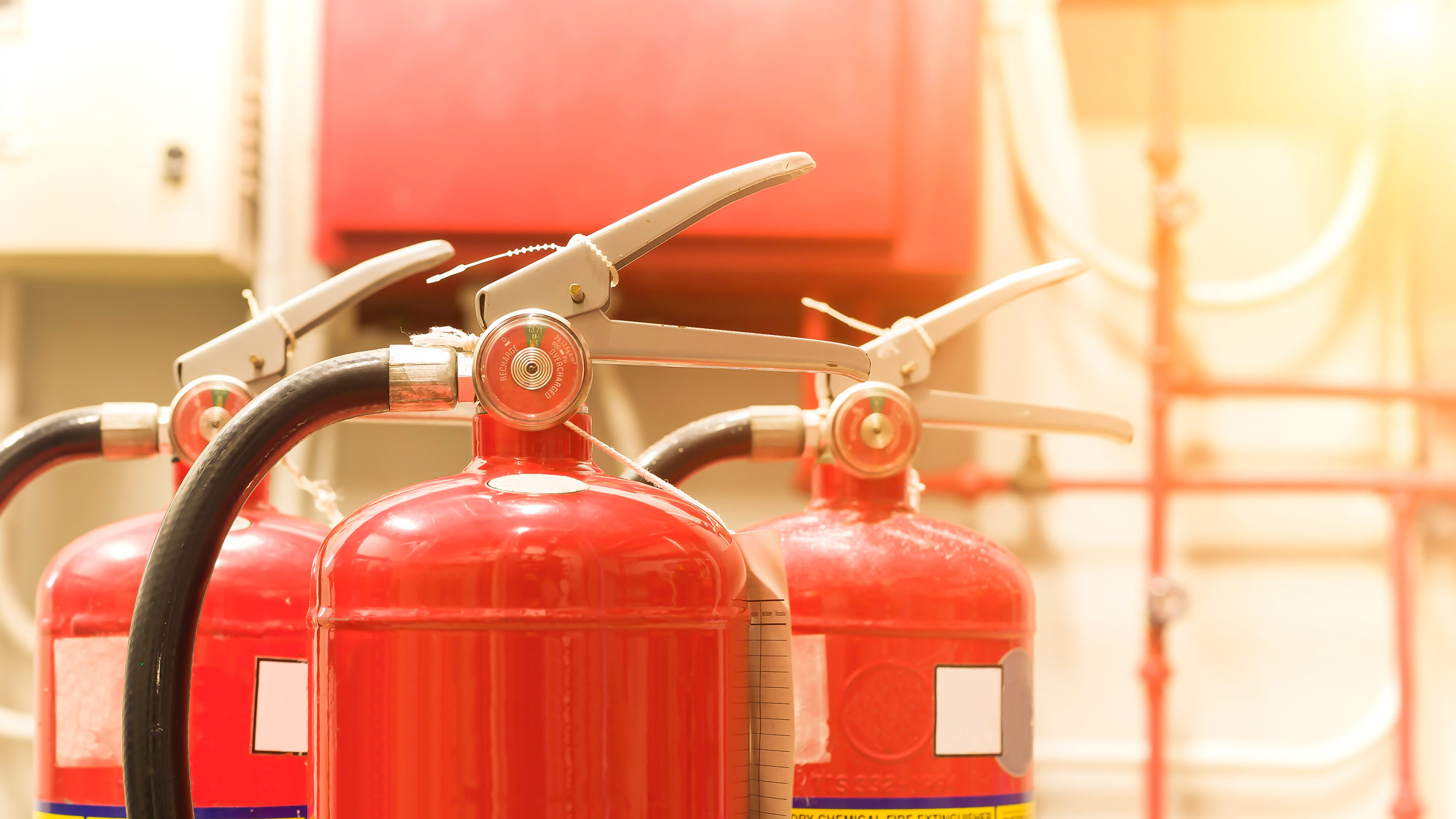
Portable fire extinguishers in the workplace—where should they be placed?
When employers provide portable fire extinguishers for their employees to use in the workplace, the Occupational Safety and Health Administration (OSHA) requires those employers to mount, locate, and identify the fire extinguishers so employees can quickly and safely access them. Under OSHA’s portable fire extinguishers standard, 29 Code of Federal Regulations (CFR) 1910.157, there are several specific requirements for the placement and setup of portable fire extinguishers. It’s crucial that you follow these requirements to stay in compliance with the standard and avoid any citations.
Distribution
- Class A: When portable fire extinguishers are provided for fighting Class A fires, which are fires involving ordinary combustible materials such as paper, wood, cloth, and some rubber and plastic materials, extinguishers must be placed, so employees don’t need to travel farther than 75 feet (ft) to get to an extinguisher.
- Class B: When portable fire extinguishers are provided for fighting Class B fires, which are fires involving flammable or combustible liquids, flammable gases, greases, and similar materials, and some rubber and plastic materials, extinguishers must be placed, so employees don’t need to travel farther than 50 ft from the Class B hazard area to an appropriate extinguisher.
- Class C: Portable fire extinguishers provided for use on Class C fires, which involve energized electrical equipment, must be placed according to the same pattern used for Class A or Class B extinguishers, as appropriate, depending on the specific hazards in your workplace.
- Class D: Portable fire extinguishers or other containers of extinguishing agent meant for fighting Class D fires, which are fires involving combustible metals, must be placed, so employees don’t need to travel farther than 75 ft from the hazardous working area to an extinguisher (or an extinguishing agent). Portable fire extinguishers for Class D hazards are required in combustible metal working areas where combustible metal powders, flakes, shavings, or similarly sized materials are generated at least once every two weeks.
All portable fire extinguishers must be fully charged and operational. Make sure they are always kept in their designated locations, except while being used.
Best practices
While not explicitly required by OSHA’s portable fire extinguishers standard, the following best practices can help you maintain an effective and compliant portable fire extinguishers program in your facility.
- It’s a good idea to create a map or a list of the locations of all fire extinguishers in your facility, especially if you have a large facility. This will help ensure you don’t miss any individual extinguishers when it comes time to conduct inspections, tests, and maintenance. You don’t want your employees to find themselves reaching for an empty extinguisher during a fire emergency!
- Although there is no OSHA requirement for portable fire extinguishers to be placed on forklifts, if forklifts are regularly used in your workplace, it’s a good idea to keep an extinguisher on each one for easy access. Just don’t forget to inspect, maintain, and test these extinguishers the same way you would with the other portable fire extinguishers in your facility.
- Fire extinguishers must never be blocked by any obstacles, such as stacked products, that would prevent employees from quickly and safely accessing them in an emergency. Even if your facility uses an outside company for inspecting and maintaining your portable fire extinguishers, someone in the facility should also perform regular visual inspections that include ensuring each extinguisher is readily accessible and in its designated location.
- In addition to required labels and tags, highly visible identification signs should be placed at each mounted fire extinguisher so employees can easily find them and see where the various fire extinguishers in the facility are located.
Finally, keep in mind that many states have regulations that impose additional requirements for portable fire extinguishers, which may be stricter than the federal requirements. Make sure you know what your state requires so you can keep your facility in compliance.



